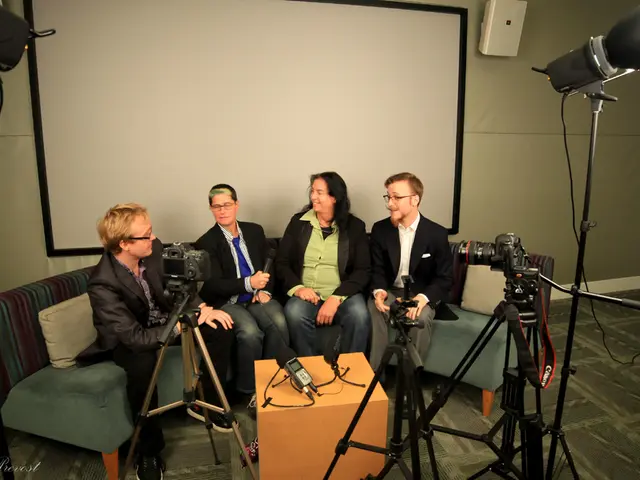Miniature Audio Device Constructed within a Single Bacterium Cell: A Notable Achievement in Nanotechnology
Scientists at Columbia University have made a groundbreaking discovery, converting E. coli bacteria into the world's smallest functioning tape recorders. This development, published in the prestigious journal Science, represents a fundamental shift in how we think about technology and could revolutionise various fields, including environmental monitoring, industrial bioprocessing, agriculture, and fundamental science.
The technology behind this molecular marvel relies on CRISPR-Cas, a system that's revolutionised genetic engineering but is actually an ancient immune mechanism that bacteria evolved to fight viruses. In engineered E. coli, the CRISPR-Cas system functions as a data recording mechanism by utilising its natural ability to integrate short sequences of DNA from external sources into its own genome, essentially creating a molecular memory of environmental events.
This molecular memory serves as a stable, heritable "log" of exposure to external DNA or engineered signals, allowing the cells to store complex histories of environmental changes in their genomes in real-time. Scientists engineer the system to link environmental or chemical signals to the activation of the spacer acquisition machinery, thus translating sensed changes into recorded DNA sequences inside E. coli. By sequencing the CRISPR arrays afterward, researchers can decode this "memory" to reconstruct what environments or stimuli the bacteria experienced over time.
One potential application is environmental monitoring. Engineered E. coli can be deployed in varied ecosystems (soil, water, industrial bioreactors) to record the presence of pollutants, toxins, or chemical fluctuations. This offers a durable and retrievable record of environmental dynamics, valuable for real-time or retrospective analysis of environmental health.
In medical contexts, these bacteria could be used as biosensors in the human body to detect and record exposure to drugs, metabolites, or pathogenic signals. This could enable in-situ monitoring of disease markers or treatment efficacy via non-invasive sampling and genome sequencing of the engineered bacteria.
The modularity of the system allows for engineering sensitivity to almost any chemical signal. Developing bacteria that respond precisely to clinically relevant biomarkers presents a challenge, but the team is working on systems where the bacteria could signal the presence of specific recorded events through easily detectable outputs.
The current system can record reliably for several days, but the future of living data systems could include multi-signal recording, cellular computing, therapeutic responders, cross-kingdom communication, and the development of living diagnostics and treatment systems. The technical challenges ahead include retrieval and readout, recording capacity, signal specificity, safety and regulation.
Bacterial recorders offer a new way to study complex biological systems. They could revolutionise precision agriculture by providing real-time soil health monitoring, and they could revolutionise gut analysis by creating a continuous, timestamped record of conditions throughout the entire digestive journey. The development of these bacterial tape recorders represents a significant step forward in the field of synthetic biology and could usher in a new era of technology that leverages billions of years of evolutionary refinement and speaks the language cells already understand.
- This groundbreaking technology, inspired by science and leveraging the CRISPR-Cas system, has the potential to revolutionize not only fundamental science but also various sectors like environmental monitoring, agricultural practices, and medical-conditions diagnosis.
- In the realm of health-and-wellness, engineered E. coli could act as biosensors, recording crucial data on drug exposure, metabolites, or pathogenic signs within the human body, thereby ensuring precise, non-invasive monitoring of disease markers or treatment efficacy.
- The advancements in this technological frontier may expand beyond sensors, with possibilities for developing living data systems capable of multi-signal recording, cellular computing, and even therapeutic responders in the future.
- A pioneering application of this technology could be in the fields of fitness-and-exercise and lifestyle, where it could revolutionize precision agriculture by offering continuous, real-time monitoring of soil health, or even revolutionize gut analysis by recording conditions throughout the digestive journey.
- Despite the current system's limited recording capacity, the future of this technology is ripe with opportunities for cross-kingdom communication, living diagnostics, and treatment systems — bridging the gap between centuries-old evolutionary knowledge and modern technology. Furthermore, it opens doors for education-and-self-development as the understanding of cellular processes evolves, as well as entertainment through the exploration of newly imagined technologies in space-and-astronomy and sports.







